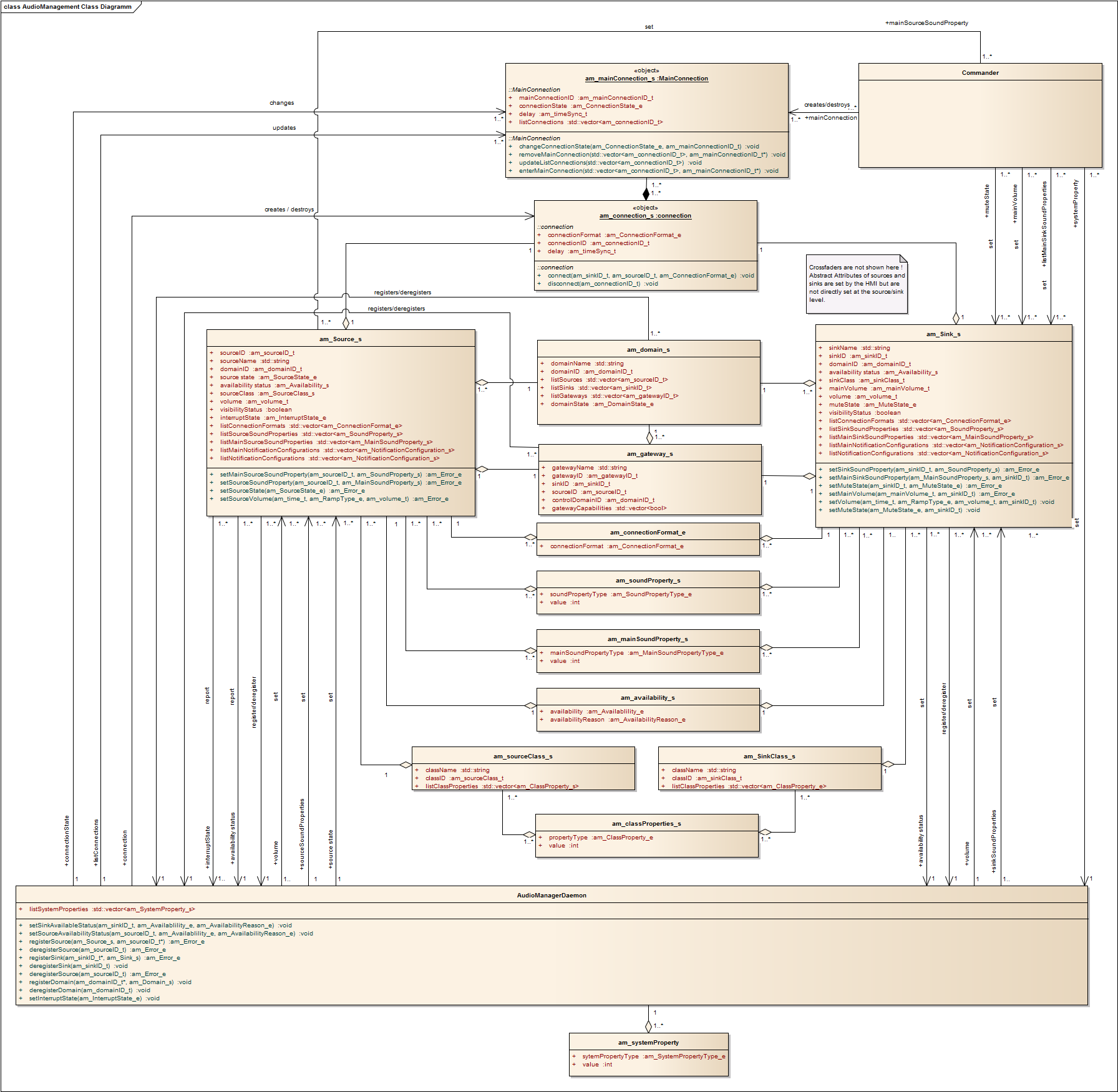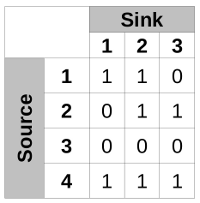|
AudioManager
7.6.6
Native Application Runtime Environment
|
|
AudioManager
7.6.6
Native Application Runtime Environment
|
This class diagram shows a logical overview of the relevant elements in the AudioManager with their relations.

The audiomanagement in principle consists of the following elements:
This is where audio comes from, for examples tuner, mediaplayer. But sources can also be part of a building block that processes audio, examples are here crossfaders or gateways. Several Sinks can be connected to one source.
This is where audio flows to, for examples amplifier, headphones. But sources can also be part of a building block that processes audio, examples are here crossfaders or gateways. Several Sources can be connected to one sink.
Gateways are described here: Gateway A specialitry of a gateways is the convertionmatrix. It indicates which sinksoundformats can be transferred in which sourcesoundformats. A convertion matrix looks like this:

Cross-faders are special elements that can perform cross-fading between two sources connected to the sinks of the crossfader. The audio of either source or both (mixed, during the fade) is put out at the source of the fader. Cross-fading within a source (for example from one song to another) is out of scope audio management and must be performed in the source.
A crossfader has two sinks and one source, where one sink is the "hot" one. It is in the duty of the AudioManagerController to connect the correct sources to the sinks in order to perform a cross-fade. When fading is started, the hotSink changes from either HS_SINKA or HS_SINKB to HS_INTERMEDIATE, when the fading is finished, it changes to HS_SINKA or HS_SINKB (the sink that was "cold" before).Fading itself is done in the RoutingAdapters, the implementation has to ensure the smooth and synchronous change of volumes. With different rampTypes, different kinds of cross-fade ramps can be supported. The actual status of the "hot" sink is reported by the routingAdapter. Care has to be taken that the correct "hot" end of the crossfader is given at registration time.